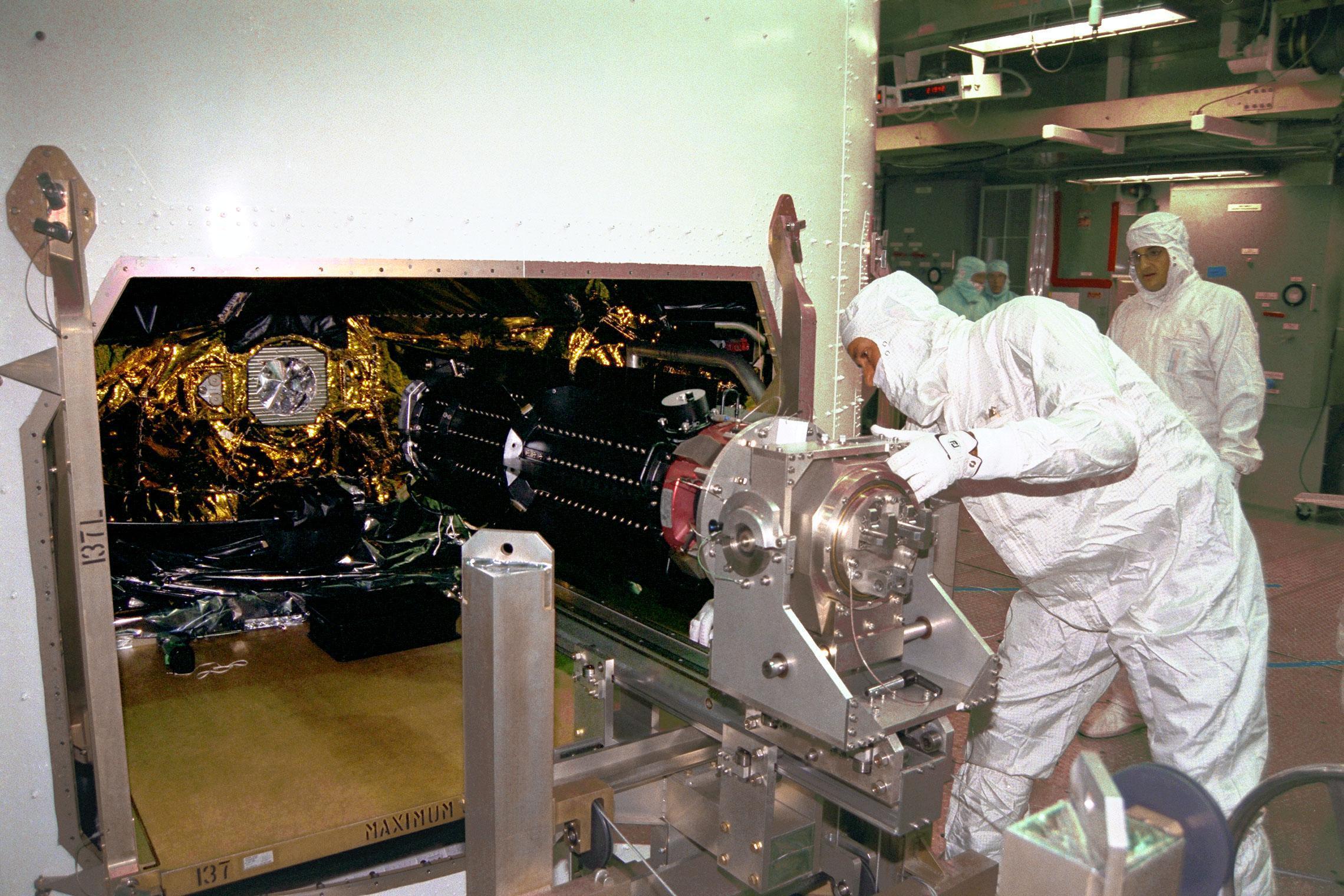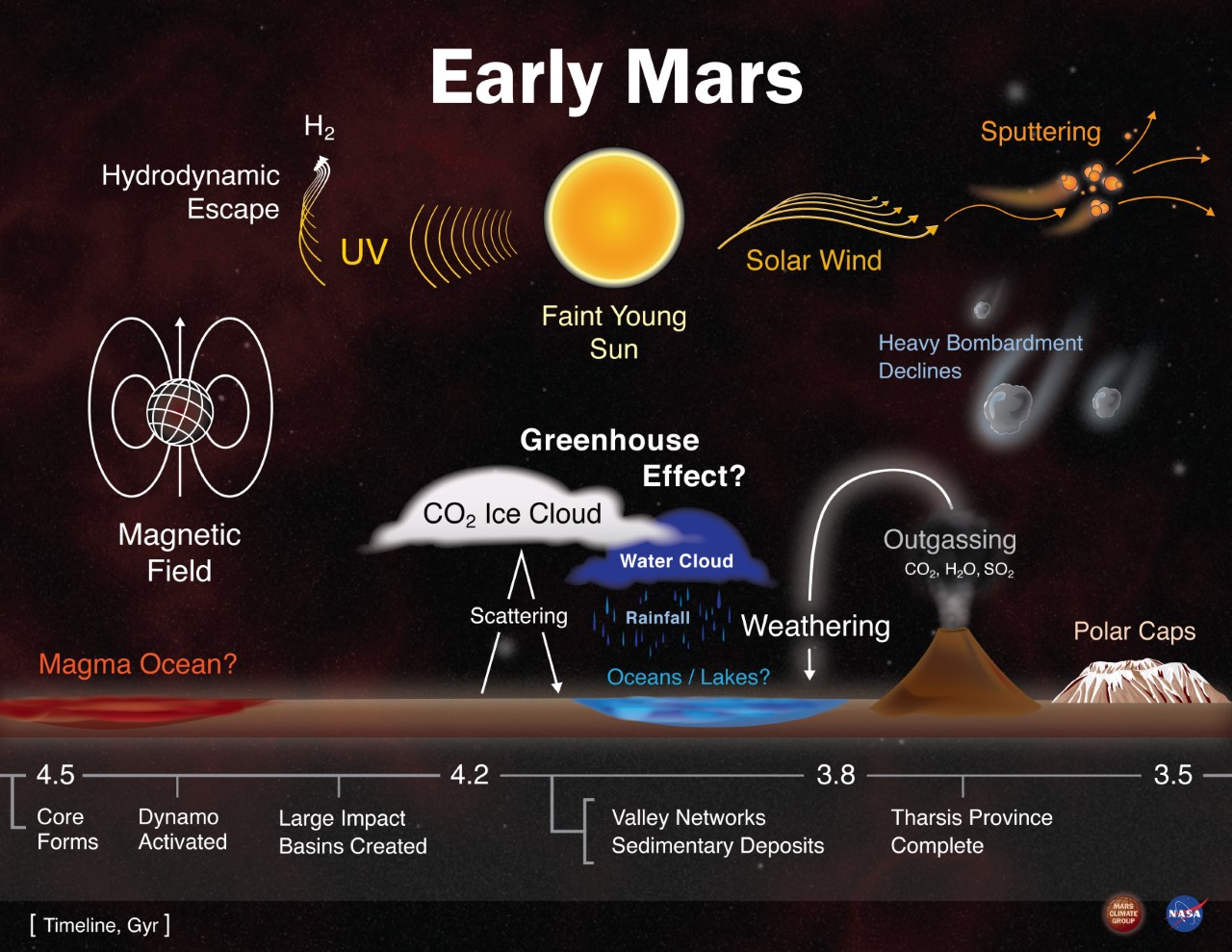Early in Mars’ history, the climate at least periodically supported liquid water on the planet’s surface. The evidence for this comes from the presence of fluvial features on ancient terrains, such as valley networks and open lake systems, which likely indicate precipitation and runoff. Other compelling reasons to believe early Mars was warm and wet come from the detection of phyllosilicates (clays) in localized outcrops on these same ancient surfaces. Phyllosilicates are the end product of basaltic weathering and their presence suggests water flowed for an extended period of time. It is still unclear whether the majority of these clays likely formed on Mars’ surface or whether they could be formed in the subsurface. Given this evidence, the major outstanding question for early Mars is how did its climate produce conditions favorable for rainfall and runoff?
We use the NASA Ames Mars GCM to address several questions relating to the Early Mars climate. Click the links below to learn about our current Early Mars projects.


























